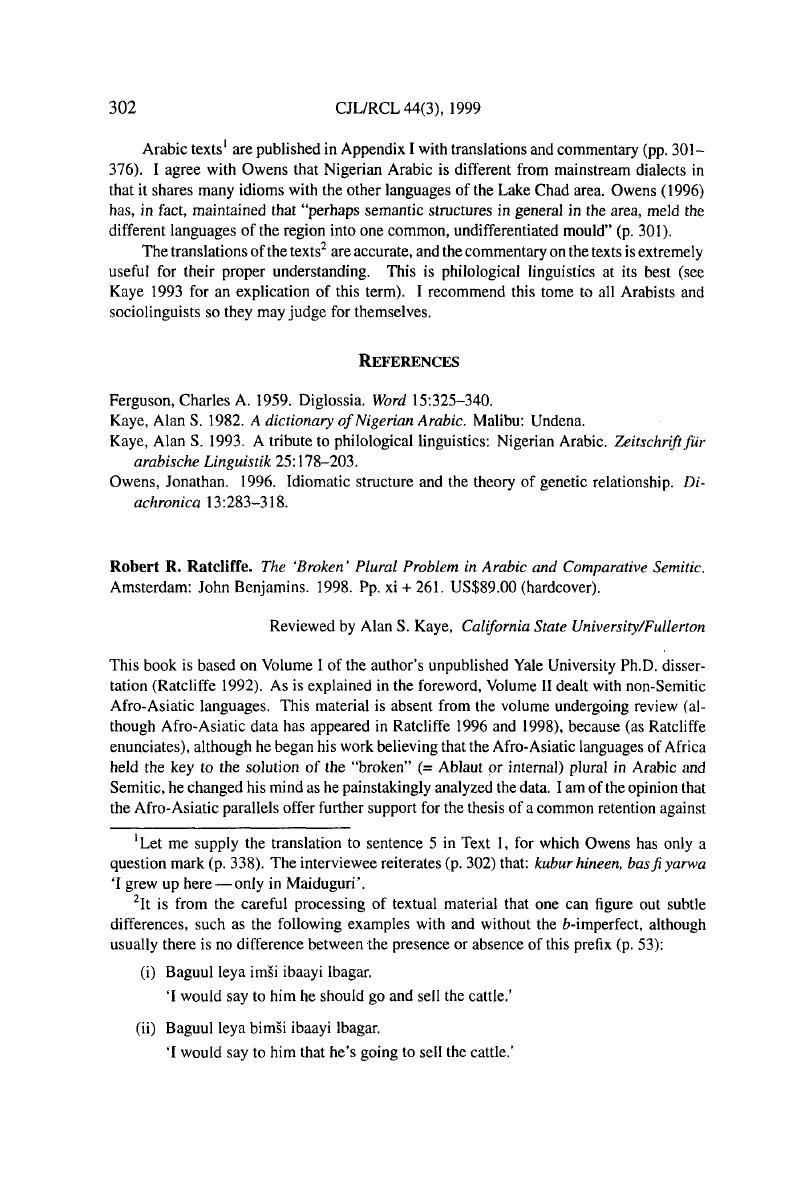No CrossRef data available.
Article contents
Robert R. Ratcliffe. The ‘Broken’ Plural Problem in Arabic and Comparative Semitic. Amsterdam: John Benjamins. 1998. Pp. xi + 261. US$89.00 (hardcover).
Published online by Cambridge University Press: 27 June 2016
Abstract
An abstract is not available for this content so a preview has been provided. Please use the Get access link above for information on how to access this content.

- Type
- Reviews/Comptes rendus
- Information
- Canadian Journal of Linguistics/Revue canadienne de linguistique , Volume 44 , Issue 3 , September 1999 , pp. 302 - 306
- Copyright
- Copyright © Canadian Linguistic Association 1999
References
Hinds, Martin, and Badawi, El-Said. 1986. A dictionary of Egyptian Arabic. Beirut: Librairie du Liban.Google Scholar
Matthews, Peter H.
1991. Morphology. 2nd ed. Cambridge: Cambridge University Press.CrossRefGoogle Scholar
Prunet, Jean-François, Beland, Renée, and Idrissi, Ali. To appear. The mental representation of Semitic words.Google Scholar
Ratcliffe, Robert R.
1992. The broken plural problem in Arabic, Semitic and Afroasiatic: A solution based on the diachronic application of prosodie analysis. Doctoral dissertation, Yale University.Google Scholar
Ratcliffe, Robert R.
1996. Drift and noun plural reduplication in Afroasiatic. Bulletin of the School of Oriental and African Studies
59:296–311.Google Scholar
Ratcliffe, Robert R.
1998. Defining morphological isoglosses: The ‘broken’ plural and Semitic subclassification. Journal of Near Eastern Studies
57:81–123.Google Scholar
Wehr, Hans. 1974. A dictionary of modern written Arabic, ed. by Cowan, J Milton. Ithaca, NY: Spoken Language Services.Google Scholar




